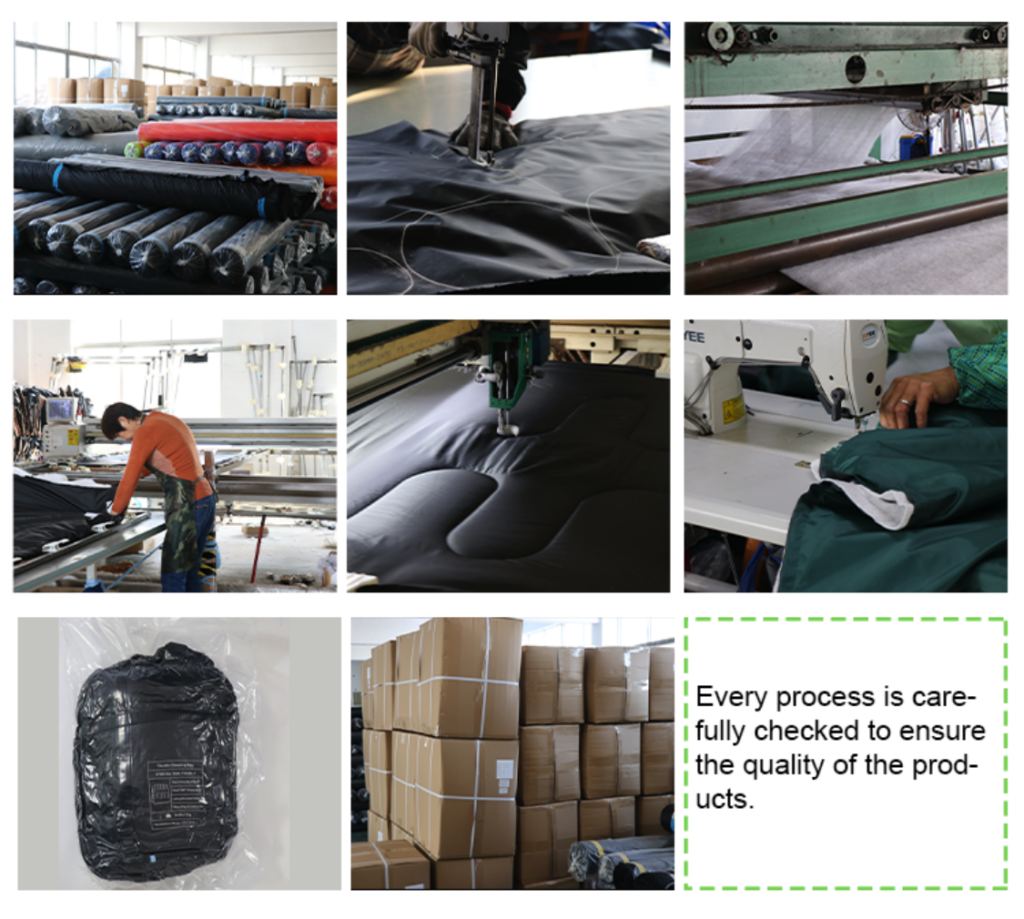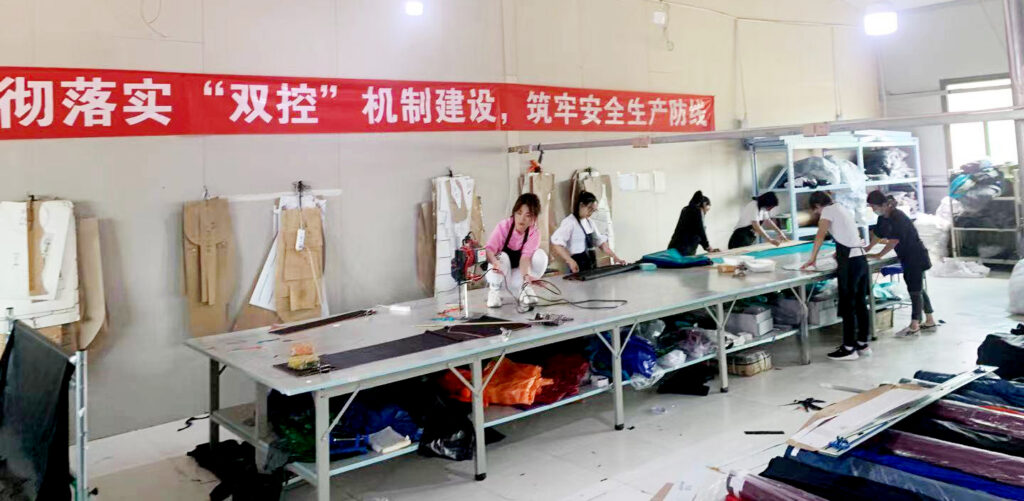1. Raw Material Procurement and Inspection
- Material Selection: Various raw materials are selected based on the sleeping bag design specifications. These materials typically include fabrics, linings, fillings (down, synthetic fibers, etc.), zippers, fasteners, and other components.
- Raw Material Inspection: A rigorous quality inspection process is carried out to ensure that all materials meet industry standards and customer specifications. This helps prevent defective materials from entering the production line and ensures the end product’s quality.
2. Design and Sampling
- Product Design: Designers craft the look, color, size, and fill material of the outdoor sleeping bag based on current market demands, fashion trends, and functional requirements.
- Sampling: The design is converted into a physical sample through pattern making. The sampling stage involves multiple iterations to ensure the product meets design requirements and provides the expected comfort levels.
3. Cutting
- Pattern Making: Patterns are created based on the design drawings. These patterns serve as templates for cutting the fabric during production.
- Fabric Cutting: The fabric is precisely cut according to the pattern specifications. This step ensures that each part of the sleeping bag is cut to the right dimensions and minimizes material wastage.
4. Sewing
- Initial Sewing: The first stitching phase involves sewing together cut parts, such as attaching the zipper, lining, and outer shell.
- Filling: The filling (down or synthetic fibers) is evenly distributed inside the sleeping bag, ensuring uniform insulation for warmth and comfort.
- Fine Sewing: Detailed sewing is done on various parts of the sleeping bag, especially at the seams. This ensures durability, prevents filling leakage, and enhances the insulation properties of the sleeping bag.
5. Assembly and Detail Handling
- Zipper Installation: High-quality waterproof zippers are installed to ensure smooth operation.
- Detail Handling: Additional components such as foot bags, wind flaps, hooks, and other accessories are added, ensuring that the sleeping bag is fully functional and meets user requirements.
6. Finished Product Inspection
- Quality Inspection: After assembly, each sleeping bag undergoes a thorough quality inspection to ensure there are no defects. This includes checking the zippers, securing the stitching, and ensuring even distribution of the filling.
- Comfort Testing: The sleeping bag is tested for comfort and functionality to ensure it meets the standards for outdoor use.
7. Packing and Shipping
- Packing: Once approved, the sleeping bags are cleaned, folded, and packaged, often using waterproof or compression bags to protect the products during transportation.
- Shipping: Shipping is arranged according to customer orders, ensuring timely delivery to the specified location.
8. After-Sales Service
- Customer Feedback: A robust after-sales service is provided. Customer feedback is collected to ensure that the product continues to meet user needs. If there are any quality issues, prompt action is taken to process returns, exchanges, or repairs.



